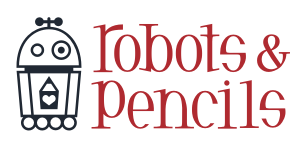Import logins, passwords and documents from your 1Password vaults to use in your GitHub Action workflows.
- name: Import Secrets
uses: RobotsAndPencils/1password-action@v1
id: secrets
with:
device-id: ${{ secrets.OP_DEVICE_ID }}
sign-in-address: ${{ secrets.OP_SIGN_IN_ADDRESS }}
email-address: ${{ secrets.OP_EMAIL_ADDRESS }}
secret-key: ${{ secrets.OP_SECRET_KEY }}
master-password: ${{ secrets.OP_MASTER_PASSWORD }}
items: |
Client A > App Store Connect
Client A > Certificate | p12
Client A > Provisioning ProfileThe imported items can then be used elsewhere in your workflow.
- name: Build
env:
FASTLANE_USER: ${{ steps.secrets.outputs.app_store_connect_username }}
FASTLANE_PASSWORD: ${{ steps.secrets.outputs.app_store_connect_password }}
CERT_FILENAME: ${{ steps.secrets.outputs.p12_filename }}
PROFILE_FILENAME: ${{ steps.secrets.outputs.provisioning_profile_filename }}
run: fastlane ios buildDevice ID: Generate a device ID with head -c 16 /dev/urandom | base32 | tr -d = | tr '[:upper:]' '[:lower:]'. This should be stable across multiple workflow runs. If you're using GitHub-hosted runners you can set this as a secret, and if you're using self-hosted runners you could set it as an OP_DEVICE environment variable in the runner's shell. In the latter case you'll need to add a step before this action that plucks out the device ID and sets it in the workflow's environment, like:
- name: Get 1Password device ID from macOS runner shell
shell: /bin/bash -l {0}
run: |
echo "OP_DEVICE=$OP_DEVICE" >> $GITHUB_ENV
echo "::add-mask::$OP_DEVICE"Note: If you receive the command not found: base32 error, you'll have to install brew install coreutils
Sign-In Address: The full URL, with subdomain, where you sign in to 1Password.
Email Address: The email address of the user you'll sign in with.
Secret Key: The secret key of the user you'll sign in with. Especially if you're using GitHub-hosted runners, this will be a "fresh" sign in, so the action needs your secret key.
Master Password: The master password of the user you'll sign in with.
Items: A string that describes the vault and item name to import, and an optional output name to rename it to. This must be written in the format VAULT > ITEM | OUTPUT_NAME. If the vault or item names contain > or | characters, you can surround the name in quotes, like "< Vault A >" > Neopets.
Login items will output both the username and password fields.
Password items will output the password field.
The output variable's name will be the item's name with spaces and . replaced with _, non-alphanumeric characters removed, and lowercased. For example, a Password item named Google Firebase 2020 would be available as the google_firebase_2020_password output variable.
Another example, a Login item named App Store Login, would be available as the app_store_login_username and app_store_login_password output variables.
Document items will be saved as files with the same filename as in 1Password. Their filename will be set as an output variable following the same rules as login and password items. For example, a document with the filename Apple Distribution.p12 will be saved as a file with the same name, and the filename will be available as the output variable apple_distribution_p12_filename.
In all cases, you can provide your own output name which will be used in place of the item name from 1Password, and normalized.
All password outputs are marked as secrets so that they're masked in your workflow's logs.
Install the dependencies
$ npm install- Install the dependencies
npm install - Install Docker Desktop https://www.docker.com/products/docker-desktop
- Install ACT - https://github.com/nektos/act
- Copy .secrets-example to .secrets and replace
xxxxwith real values - Run
npm run act
Couple of things:
- need to use the
ubuntu-latest=nektos/act-environments-ubuntu:18.04docker image which is 18 GB! test- the name of your job from the.github/workflows/test.ymlfile--secret-file .secretsis a list of secrets that the docker image uses in replacement of github secrets. Set these locally and do not check in--env-file .environmentthis simply adds in aACT=true. This can be removed once nektos/act#417 is released. Act v > 0.2.17
Build the typescript and package it for distribution
$ npm run build && npm run packageRun the tests ✔️
$ npm test
PASS ./index.test.js
✓ throws invalid number (3ms)
✓ wait 500 ms (504ms)
✓ test runs (95ms)
...$ npm run package
$ git add dist
$ git commit -a -m "Made some changes"
$ git push origin releases/v1See the versioning documentation
Made with ❤️ by Robots & Pencils

